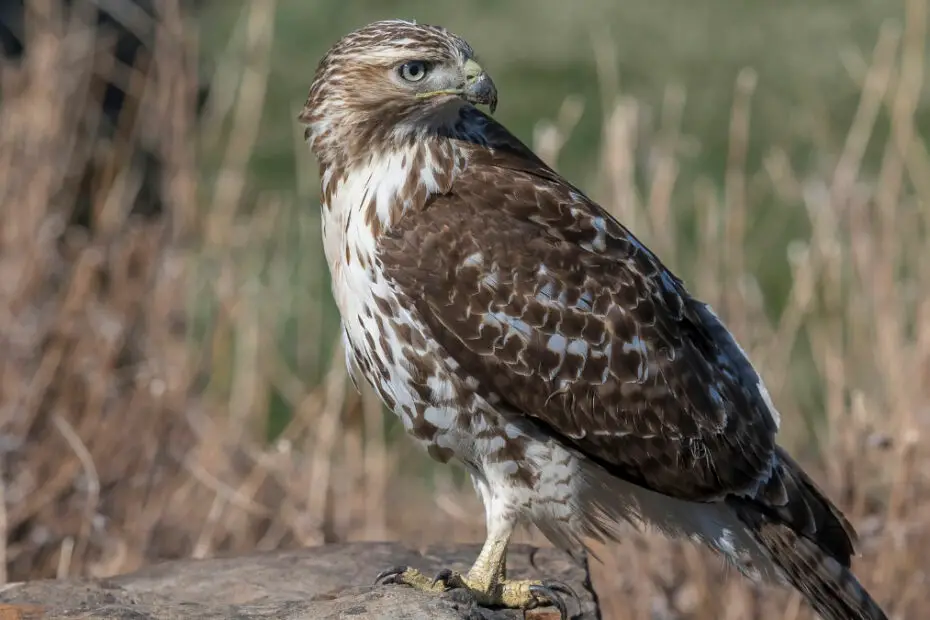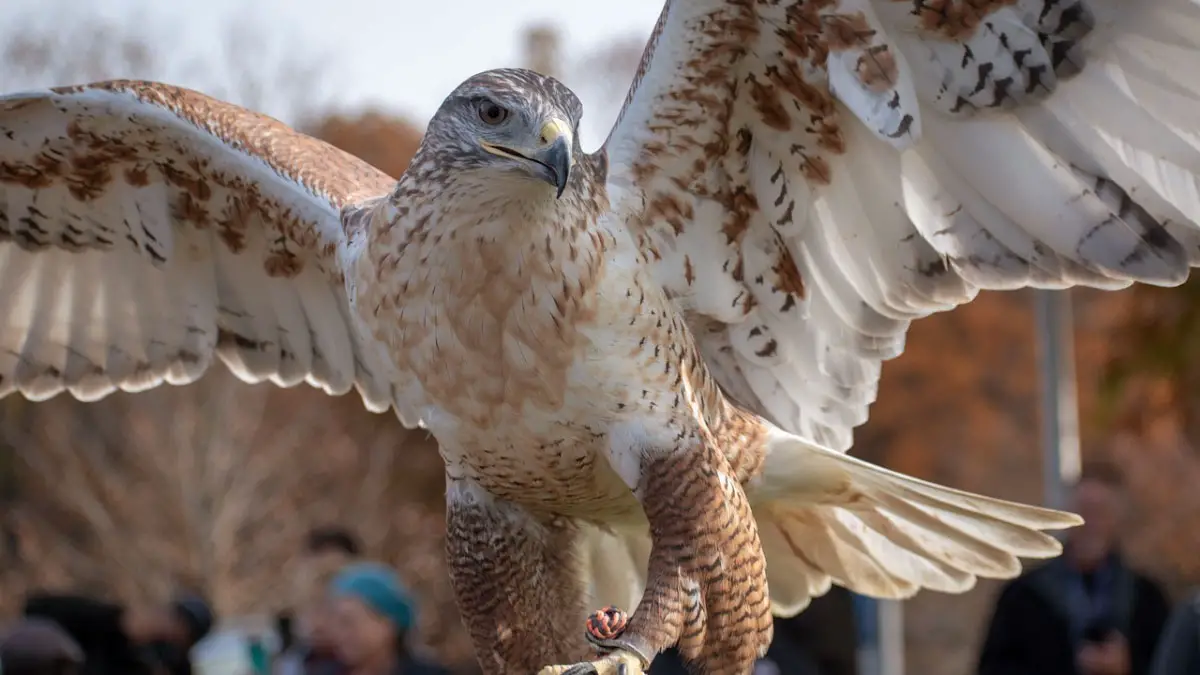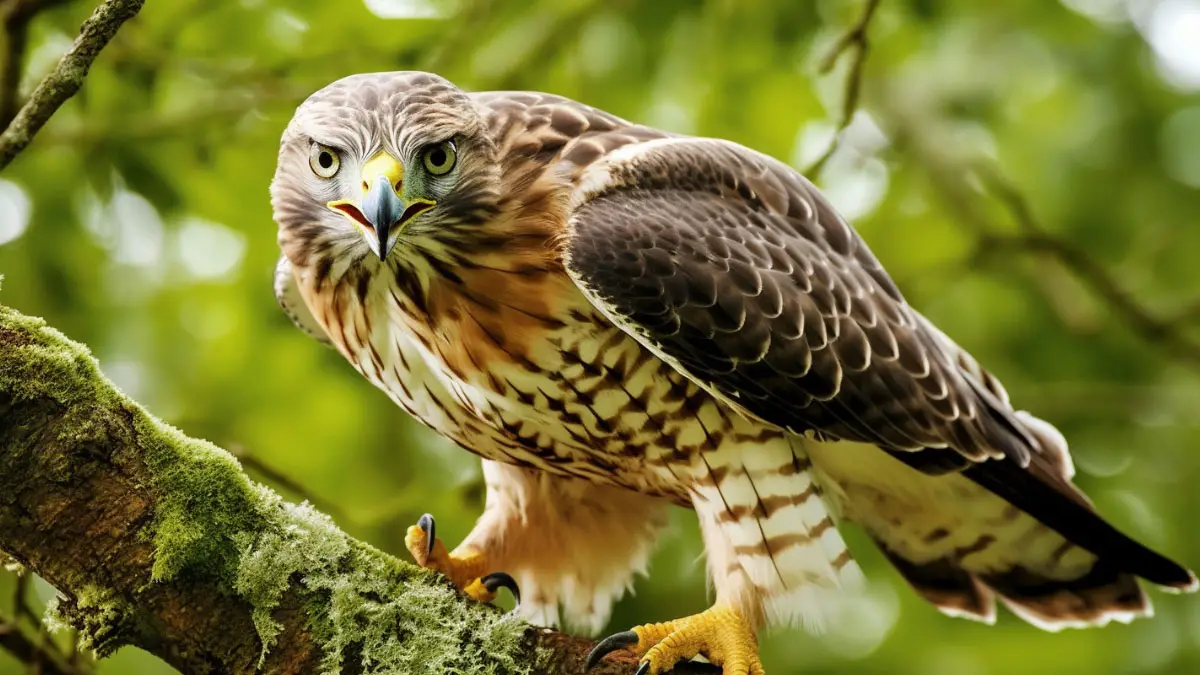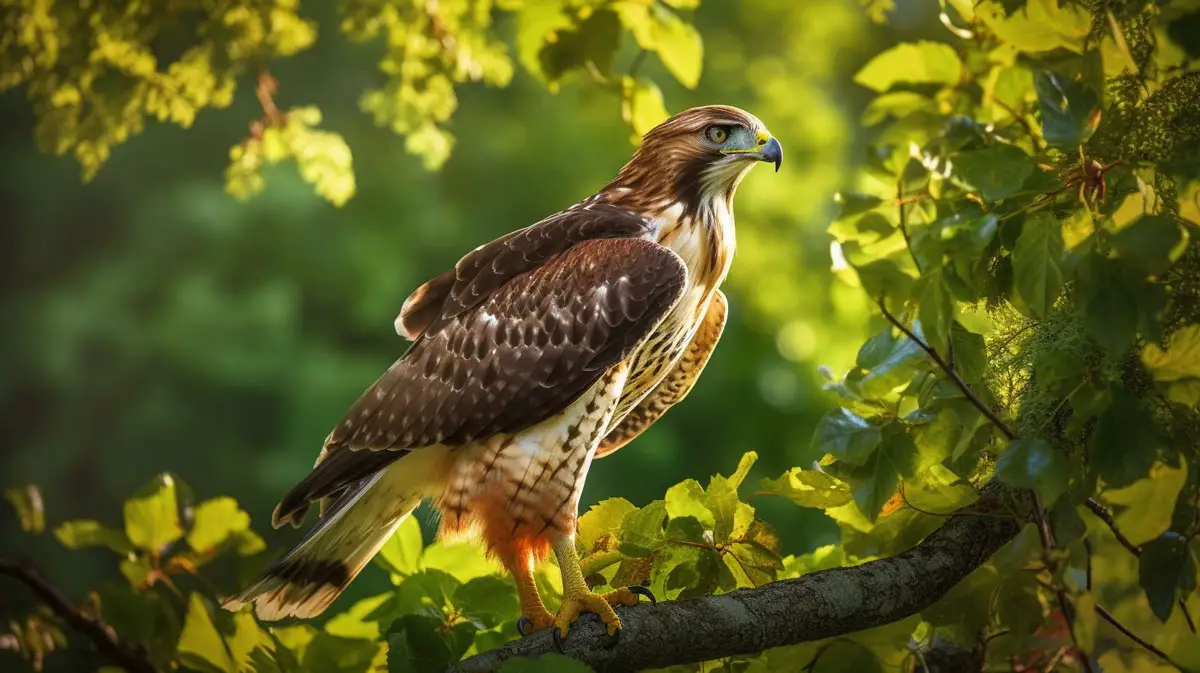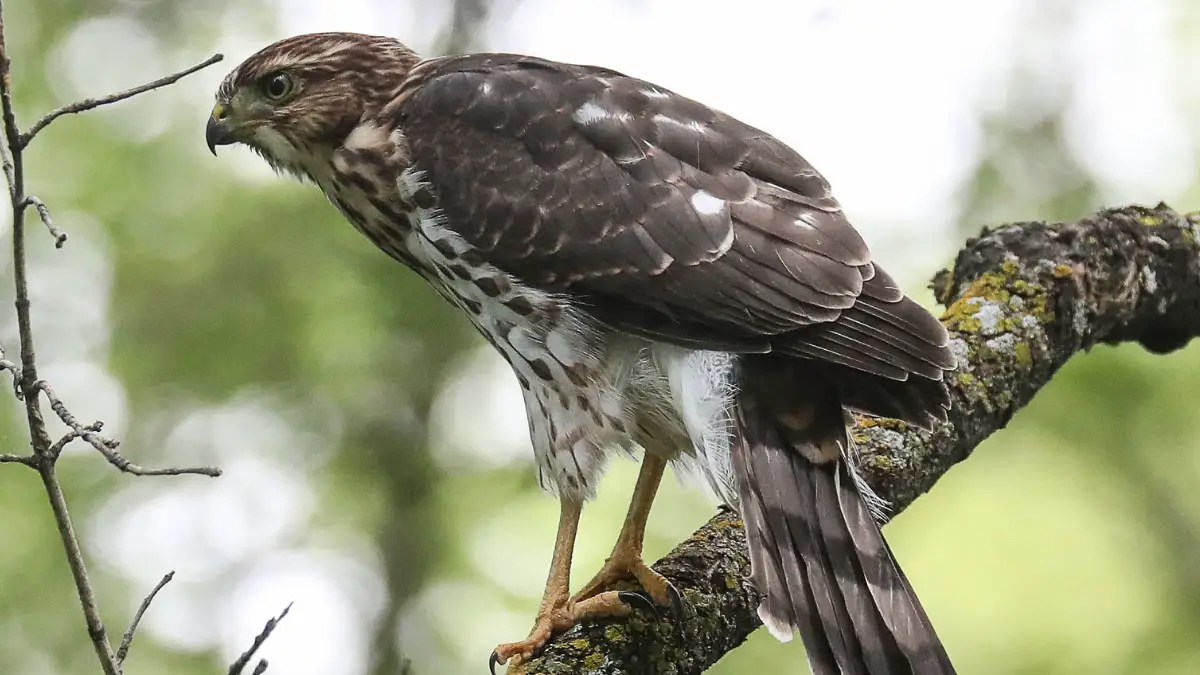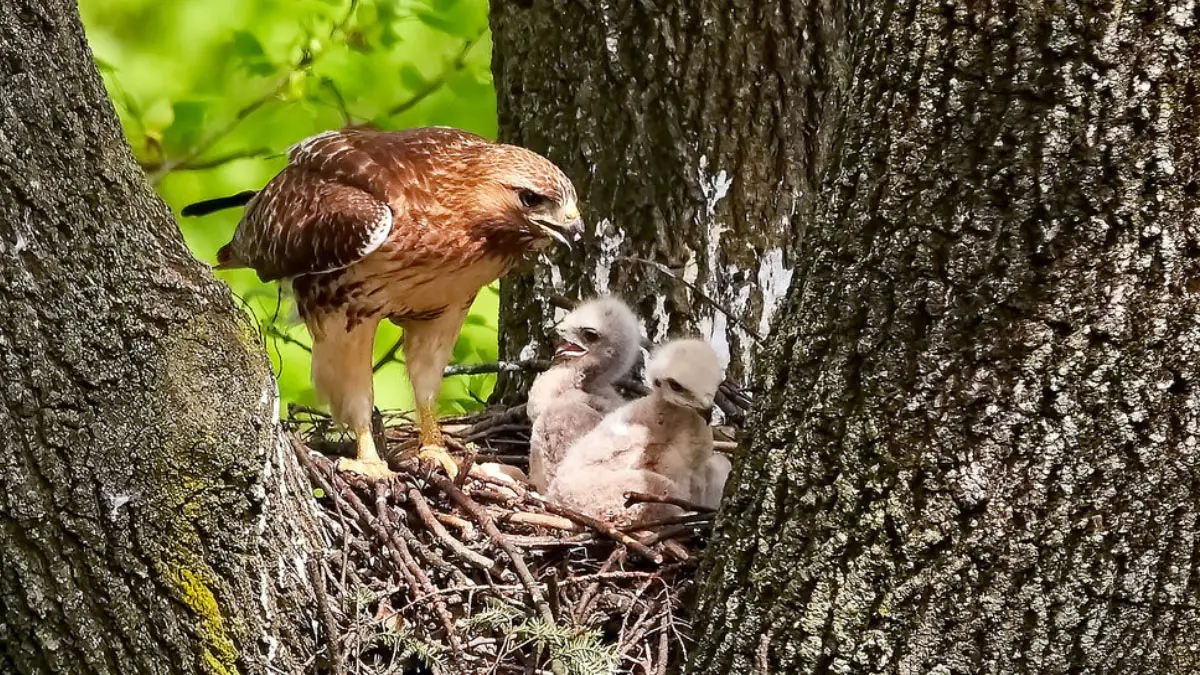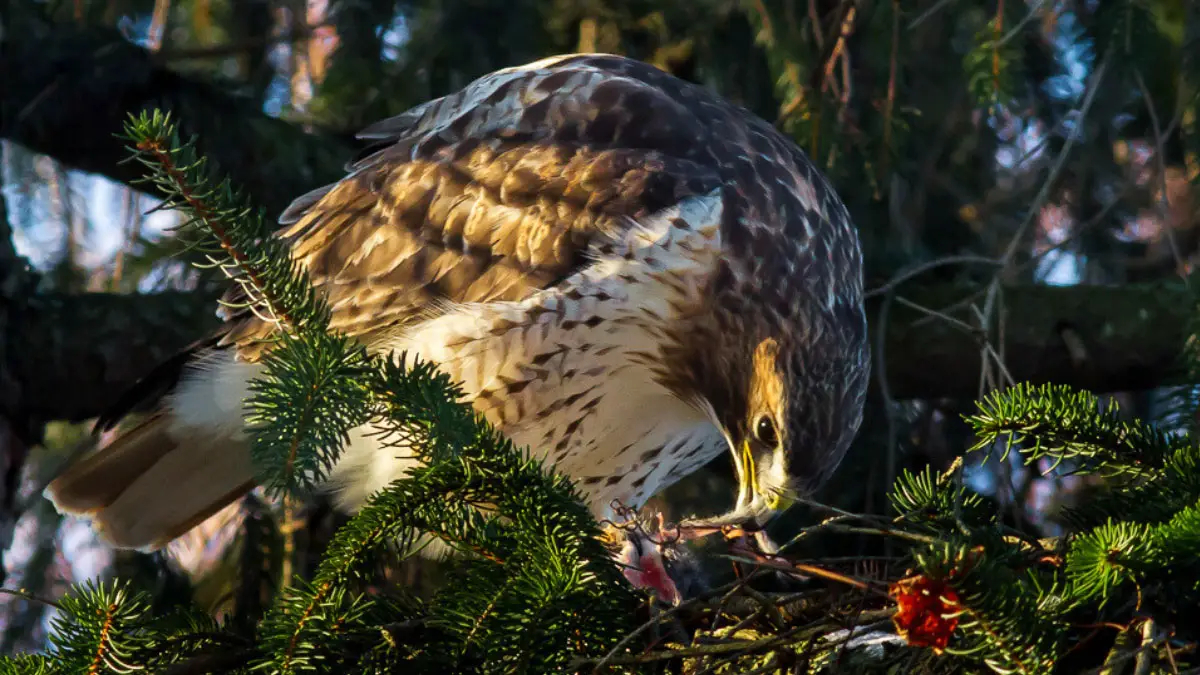Hawks are popular birds of prey found on all continents except Antarctica. These birds are known for their powerful talons, sharp hooked beaks, and keen eyesight, which makes them skilled hunters. Typically, their prey includes small mammals, birds, reptiles, and insects.
As animals of prey, these birds are important in many ecosystems. For example, they help control the population of small mammals like rodents. As a result, this helps prevent the rodents from causing damage to the vegetation or spreading diseases to humans.
But while they are birds of prey, these birds have several predators. So, understanding their predators is critical in protecting these birds from population decline. Simply, it can help inform organizations and individuals to conserve and manage hawks’ wildlife.
So then, what are the predators of hawks? The common predators of these birds are their fellow feathered cousins, including falcons, eagles, and owls. Mammals like bobcats, raccoons, coyotes, and foxes are also notorious for preying on young birds and their eggs. Occasionally, snakes may also attack these birds.
Want to learn more? In this blog post, you will discover everything there is to know about which animals are hawk predators. You will also find out how these birds defend themselves against predation. So, keep reading.
Common Hawk Predators
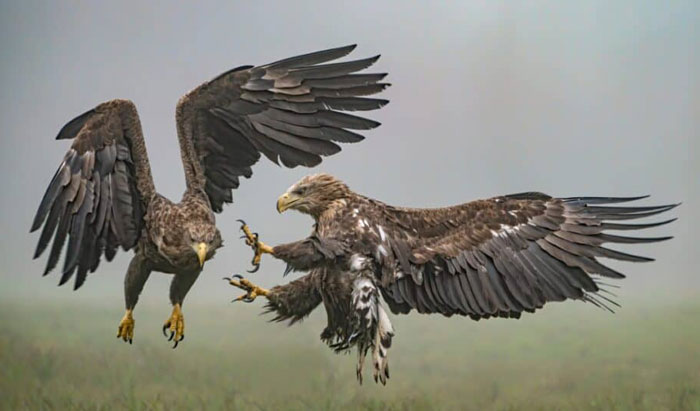
Despite being at the top of the food chain, these birds have several natural predators. These are:
1. Eagles
Eagles are one of the common natural enemies of these birds. This is because they are larger at 36 to 43 inches long, while hawks are only 18 to 30 inches. Eagles also have a broader wingspan at 6.6-8 feet, while that of hawks is only 2-4 feet.
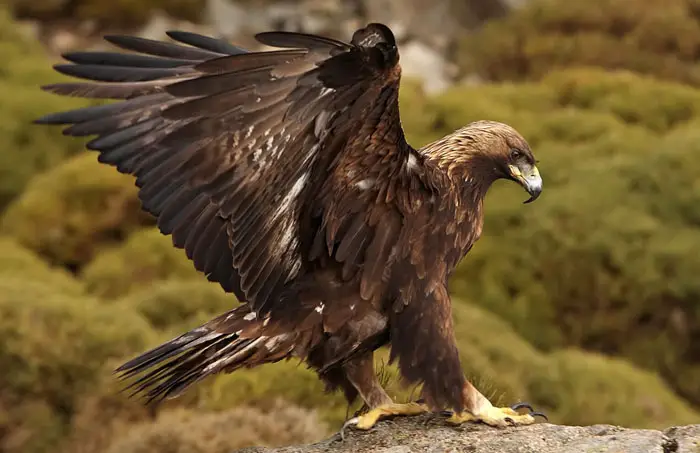
However, the golden and bald eagle species are the most notorious for preying on these birds. They usually attack the fledglings in their nests and smaller hawks.
2. Owls
The great horned owls and Snowy owls are the common species that eat these birds. Like eagles, owls are also relatively large in terms of wingspan and weight. The largest owl species measures about 18 to 25 inches long and has a wingspan of 4.3 to 4.5 feet.
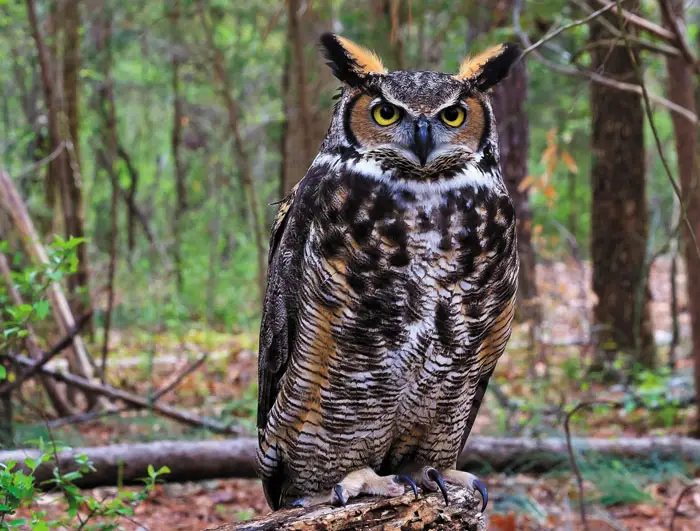
Therefore, they can easily take down a red-tailed hawk and other smaller species. Owls also attack the eggs and nestlings of these birds at night.
3. Falcons
Falcons, especially the peregrine falcon, are faster in flight than hawks. But because of their smaller size, falcons mainly prey on smaller birds. They use their strong talons to catch these raptors while flying.
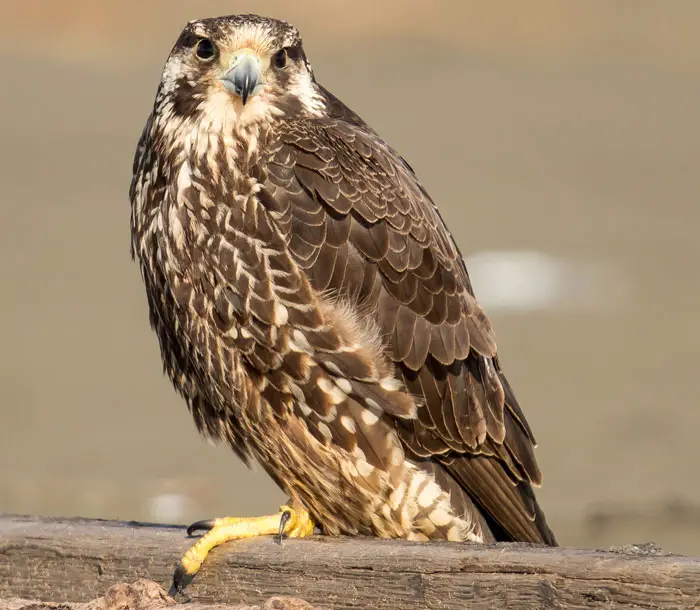
Factors That Contribute to Successful Hawk Predation
Although hawks are skilled predators, they may sometimes become vulnerable to larger predators like eagles. This is because of factors such as:
Small Size
Hawks typically measure 18 to 30 inches long. On the other hand, eagles, which are one of their common predators, are about 36 to 40 inches long. This makes them more vulnerable to predation.
Body Mass
Hawks weigh around 2-4 pounds while predators like raccoons weigh between 11 and 57 pounds. Similarly, eagles weigh around 9 to 14 pounds. Therefore, heavy-weight predators can easily overpower these birds due to their small body mass.
Weaker and Shorter Talons
Because of their larger body size, eagles have stronger talons and feet than hawks. Similarly, the talons of eagles are relatively longer. They can grow up to 5 inches long, while those hawks grow up to 2.12 inches long. So, in a physical confrontation, these birds are usually more endangered.
Sickness or Injury
Hawks usually become highly vulnerable to many predators if sick or injured. They may also become weakened by environmental factors or stressors, making them easier targets for predators like owls.
Comparison of Predator Strategies and Their Effectiveness
Predators use different tactics to hunt and capture their prey. Here are some of the common hunting strategies and their effectiveness.
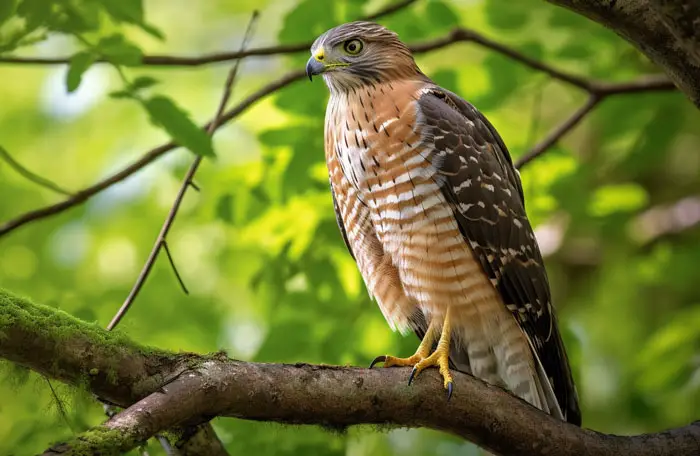
Cooperative Hunting
Predators like coyotes may sometimes hunt in groups to take down hawks. This strategy is highly effective because it enables the predators to overwhelm the prey, giving it little chance of escaping.
Ambush
Ambush is where a hawk’s predators wait in a hidden place for potential prey to pass by. The predator may hide in vegetation, waiting to attack the hawks once they get distracted. It is quite effective because the animal of prey usually stays undetected, giving these birds little chance to escape.
Pursuit
As the name suggests, pursuit strategy involves the animal of prey actively pursuing or chasing after its prey. Some predators, especially the eagles usually chase after the hawks either on the ground or in flight.
Its effectiveness depends on the predator’s agility and speed. Also, hawks have to be slower and less agile for it to work.
Impact of Predator Populations on Hawk Populations
Animals of prey may pose a significant threat to the entire population of these raptors. For example, owl species and eagles may compete with these raptors for resources like prey and nesting sites.
Even worse, these birds of prey can attack hawks and their young ones. This may make it difficult for these birds to survive and reproduce where these predators are in large numbers.
However, if the population of animals of prey is too low, this may cause an increase in these species’ populations. In some cases, the increase may be too much, causing an imbalance in the ecosystem.
Other Hawk Predators
So, what eats hawks besides other birds? One of the predators is snakes, including rattlesnakes, corn snakes, and kingsnakes. However, snakes only attack them when the bird swoops down to target them.
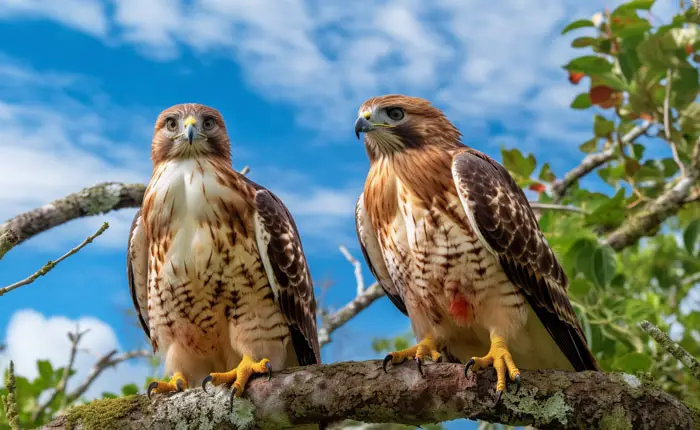
Snakes like kingsnakes and corn snakes usually prey on baby birds in their nests by climbing up the tree. But for the rattlesnakes, they kill their prey by injecting venom into them.
Unfortunately, snakes and hawks may die during their encounter because these birds are also powerful hunters. They can strike the reptile with their sharp talons and strong beak.
Predation by Mammals
While these raptors are known to eat smaller mammals, there are large mammals who are their predators. These predator species include:
1. Foxes
Foxes, especially the red fox species, usually search and attack hawk’s nests for their young ones learning to fly. They also prey on injured birds. However, these predatory birds are not foxes’ typical diet of choice.
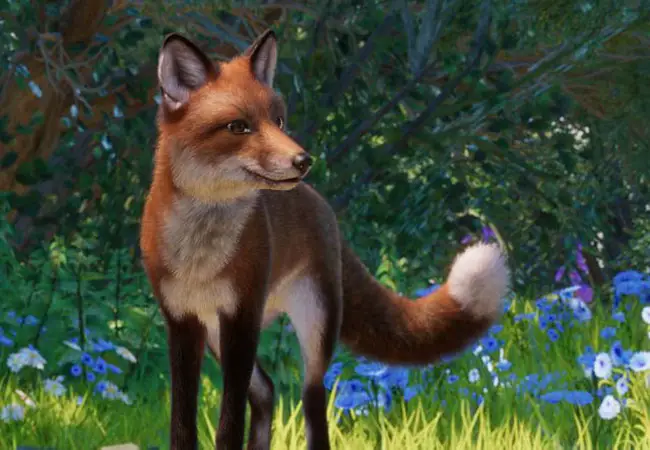
2. Raccoons
Raccoons are not a threat to larger and adult birds. These mammals are opportunistic feeders that only prey on baby birds and their eggs. They usually climb up the tree and snatch the eggs when left unattended.
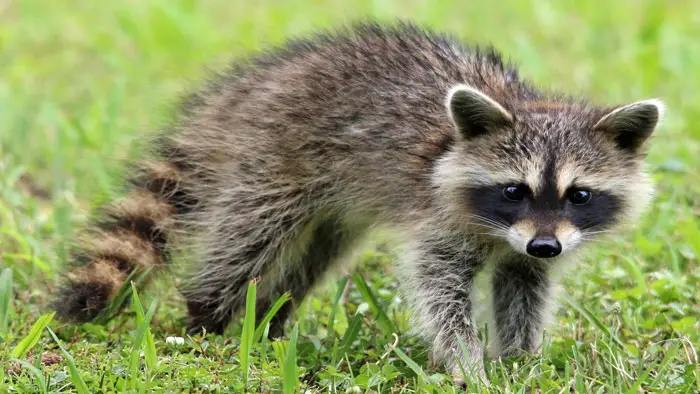
3. Bobcats
Like all felines, bobcats are carnivorous. As such, it is not unusual for them to kill and eat young and injured birds. Like raccoons, bobcats can climb trees to reach these raptors’ nests.
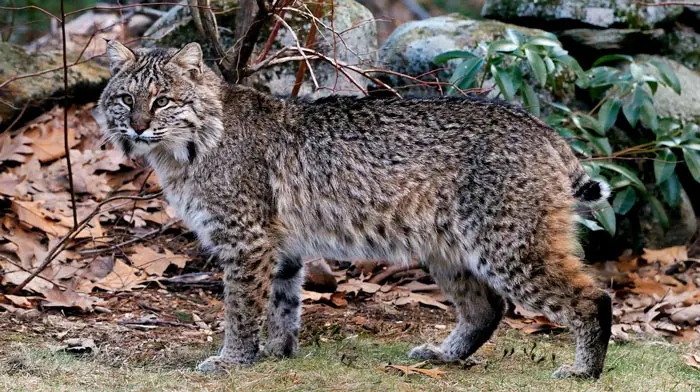
4. Coyotes
Coyotes are opportunistic predators. Therefore, they can eat these birds, especially where other food sources are scarce. But in most cases, coyotes usually dine on dead hawks.
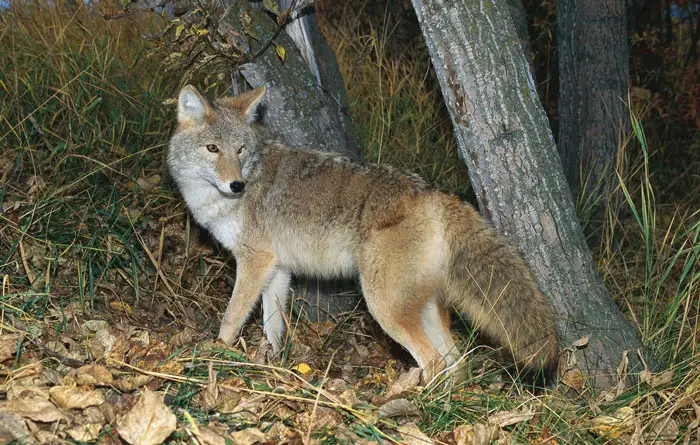
Human-Related Threats
Like other animals, these birds may face a variety of human-related threats. They include the following:
Poaching
Humans may poach these birds for various reasons. Some kill them to protect their livestock and others for recreation. In some cultures, these raptors are hunted for their meat, leading to their population decline.
Habitat Destruction
Human activities like urbanization, mining, agriculture, and deforestation can lead to the degradation of hawks’ natural habitats. Consequently, this may lead to fewer nesting and foraging habitats for these birds. Over time, their population may decline due to fewer breeding sites.
Impact of Non-Natural Predators on Hawk Populations
Non-natural predators like humans may have a remarkable effect on the bird populations of these species. By encroaching on their habitats, these birds may abandon their nests, reducing their breeding success. And as a result, this may lead to lower population numbers.
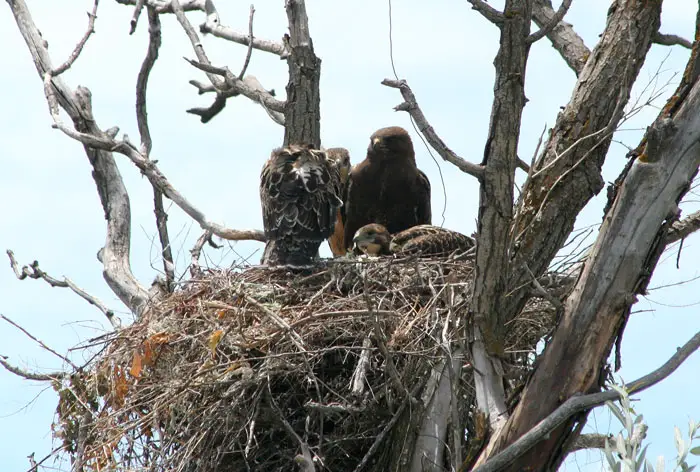
Also, when non-natural predators destroy these birds’ habitats, their prey availability may reduce. This may lead to hawk migration in search of territories where prey is abundant. Consequently, their population will be more concentrated in some areas but limited in others.
Hawk Defense Strategies
While there are so many predators of these birds, how do hawks avoid being preyed upon? These birds have developed various strategies over time. These include:
Evasive Flying
These birds are excellent fliers. Therefore, they usually use their agility and speed to evade animals of prey, including birds of prey and terrestrial predators like foxes. These birds typically perform maneuvers like diving and turning to escape their hunters.
Vocalizations
Different species produce various sounds as a defense strategy. For instance, the red-tailed hawks usually make a hoarse scream (kee-eeee-arrr) for 2 to 3 seconds. The scream can be a defensive response when an intruder enters their territory or a signal of irritation.
Conversely, Cooper’s hawks normally make a loud, grating call (cak-cak-cak), lasting for 2 to 5 seconds. The birds make the call in defense of their nest or during courtship.
How These Defense Behaviors Help Hawks Avoid Predation
First, through evasive flying, these raptors can outmaneuver their attackers and escape danger. Also, when these birds employ evasive flying by combining changes in altitude, direction, and speed, this usually confuses their pursuers.
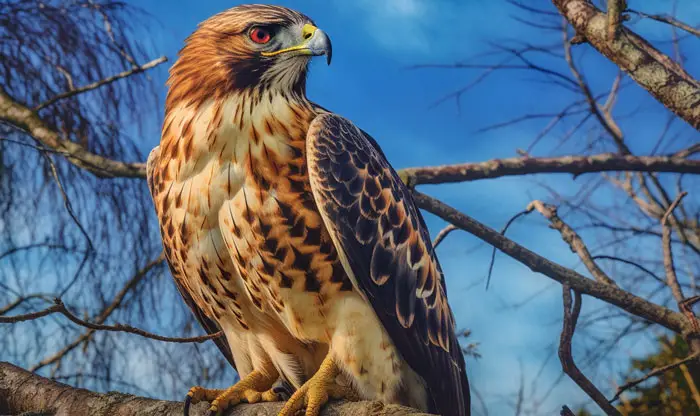
Additionally, vocalizations help these species avoid predation by alerting other species of potential danger. This allows the other birds to fly away or stay more alert. Also, the calls help warn the predators of their presence. Consequently, the animals of prey may abandon their plans of attacking the hawks in the territories.
Comparison of Defense Strategies Across Different Hawk Species
These birds use evasive flying as a defense strategy to avoid predation. However, some species have a unique set of defensive techniques. These species include:
Red-Tailed Hawks
The red-tailed species usually produce a high-pitched scream when they sense an intruder is in their territory.
Sharp-Shinned Hawks
When sharp-shinned hawks detect any threat, they may produce a high-pitched alarm call to warn other birds. The call is usually a series of rapid cackles. Also, these birds have a unique flight pattern that allows them to avoid predation.
Cooper’s Hawks
These species use vocalizations to avoid predation. They usually make a loud and piercing call, cak-cak-cak, for 2-5 seconds. This helps keep the animals of prey away from their nests.
In addition, these birds tend to camouflage well in the woods to evade predators. They don’t perch openly on a tree branch like red-tailed hawks.
Northern Harrier
The Northern Harries protect their nests and young ones by flying low over potential intruders. They usually do this while calling loudly, attempting to scare off the animals of prey.
Factors that May Influence Hawk Defense Behaviors
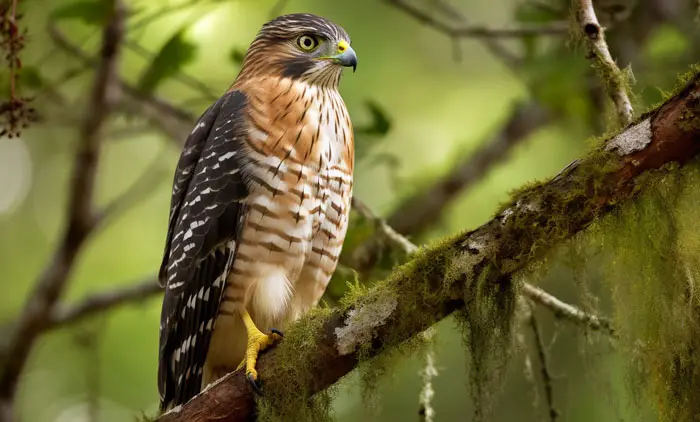
Depending on various factors, these birds may exhibit different defense behaviors. Examples of these factors are:
Breeding Season
When these birds are breeding, they tend to be very territorial in guarding their nesting sites. The birds can be very aggressive, even to humans, attacking potential intruders with their wings, sharp talons, and beaks..
Type of Threat
These species may also adjust their defense behavior based on the size and strength of the predators. For instance, they may use evasive flying against birds of prey like owls and eagles. But animals of prey, like coyotes and foxes, may use vocalizations to chase them away.
Implications for Conservation
Understanding the predation of these species is important for conservation efforts. This is because these raptors play a critical role in maintaining a natural balance in the environment. Not to mention, they are indicators of the ecosystem’s health.
So, by understanding these birds’ predation, conservationists can develop more effective strategies to protect them from predators. Also, conservation efforts can be implemented to protect their prey and promote biodiversity. Consequently, this can help in maintaining healthy ecosystems.
Overview of Current Conservation Strategies to Protect Hawk Populations
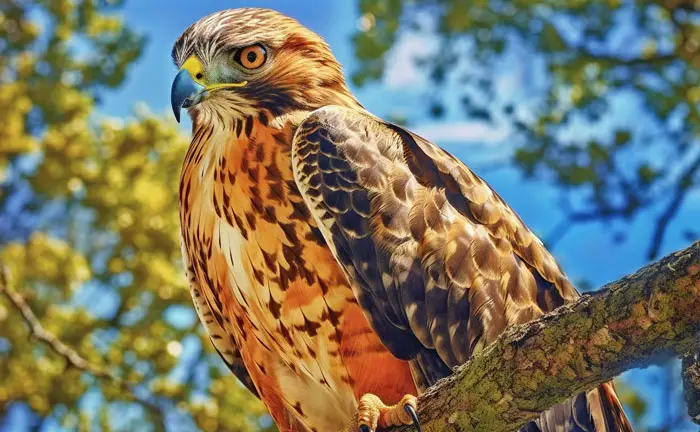
Currently, there are several conservation strategies already in place to preserve the populations of these birds. They are as follows.
- Legal Restrictions: It is illegal to hunt, shoot, trap, or kill these birds or any raptor in the U.S. under the federal Migratory Bird Treaty Act. All migratory birds, including hawks, are protected under this Act.
- Creating Awareness: Several organizations aim to conduct environmental education activities. These activities are meant to raise awareness about these birds and their role in ecosystems. Two good examples of such organizations are The Peregrine Fund and Conservation Hawks.
- Habitat Conservation: Conservationists have also been focusing on restoring hawks’ habitats, including the wetlands, grasslands, and forests. Habitat conservation also includes limiting human activities while encouraging sustainable land use practices.
Suggestions for Future Research to Improve Hawk Conservation Efforts
Researchers need to study the impact of climate change on this bird of prey population. This may help inform better conservation efforts. Also, more research is needed to determine the impact of human activities like hunting on the reproduction success of these birds.
Additionally, research is required on the use of technology to monitor these birds’ populations. Using monitoring programs and software may help in identifying innovative ways to protect these predatory birds.
Conclusion
Knowing what animals prey on hawks is critical in protecting these bird populations. This is because these species play a critical role in maintaining a healthy ecological system both as prey and as birds of prey. And since these birds have several predators, learning about their defense behaviors is also equally important.
However, the relationship between these species and animals of prey is quite complex. This is because these birds are apex predators. So, in some cases, these birds of prey and their predators usually compete for the same food resources. This can lead to conflicts.
Because of hawk’s complex relationship with animals of prey, protecting their populations from predation is essential. The reason is that if their population is weakened due to predation, this could disrupt the ecological system balance.
